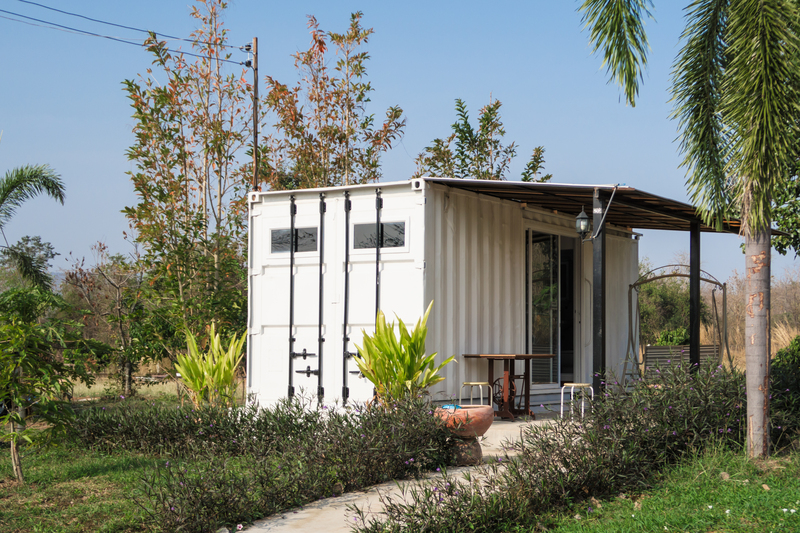Simple Steps to Turn Your House into an Eco Haven
Transforming your home into an eco-friendly sanctuary doesn't have to be an overwhelming task. With thoughtful adjustments and sustainable practices, you can reduce your carbon footprint, lower energy costs, and create a healthier environment for yourself and future generations. Let's explore some simple yet effective steps to convert your house into an eco haven.
1. Embrace Energy Efficiency
Energy efficiency is a cornerstone of sustainable living. By optimizing how you use energy at home, you not only save money but also conserve precious natural resources.
Upgrade to Energy-Efficient Appliances
- Choose appliances with the Energy Star label, which are designed to consume less electricity and water.
- Consider smart appliances that can be controlled remotely to reduce unnecessary power use.
Install LED Lighting
Switching to LED bulbs is an easy step with massive impacts. LEDs use up to 85% less energy than traditional bulbs and last significantly longer.

2. Focus on Water Conservation
Water is a valuable but limited resource. Implementing water-saving measures can significantly reduce your household's consumption.
Install Low-Flow Fixtures
- Replace old showerheads with low-flow options to conserve water without sacrificing pressure.
- Opt for dual-flush toilets to minimize water usage during each flush.
Collect Rainwater
Set up a rain barrel to collect rainwater for garden use. This practice not only saves water but also benefits your plants, as rainwater is free of the chemicals found in tap water.
3. Enhance Insulation and Seal Leaks
Proper insulation and sealing are crucial to maintaining a comfortable indoor environment and reducing energy waste.
Check and Upgrade Insulation
- Insulate your attic, walls, and basement to maintain a stable indoor temperature and reduce heating and cooling costs.
- Use eco-friendly insulation materials such as cellulose or recycled denim.
Seal Drafts
Identify and seal drafty windows and doors with weatherstripping to avoid heat loss. Additionally, use caulking around frames to ensure a tight seal.
4. Adopt Sustainable Materials and Furnishings
When redecorating or updating your home, consider using materials and furnishings that are kinder to the environment.
Choose Eco-Friendly Materials
- Use sustainable wood, bamboo, or reclaimed materials for flooring and furniture.
- Select low-VOC (Volatile Organic Compounds) paints and finishes to improve indoor air quality.
Opt for Second-Hand or Vintage Furniture
Buying pre-loved furniture reduces demand for new resources and adds unique charm to your home d?cor.
5. Integrate Greenery
Plants not only beautify your home but also contribute to a healthy living environment by purifying the air and enhancing mood.
Cultivate Indoor Plants
- Introduce a variety of indoor plants such as spider plants, snake plants, and peace lilies for natural air purification.
Create an Outdoor Garden
If space allows, grow an outdoor garden with native plants to support local wildlife and reduce the need for water and fertilizers.
6. Implement Waste Reduction Techniques
Reducing waste is a significant aspect of sustainable living. Focus on minimizing, reusing, and recycling household materials.
Compost Organic Waste
Create a composting system for household food scraps and yard waste. Composting reduces landfill use and provides nutrient-rich soil for your plants.
Practice the 3 R's: Reduce, Reuse, and Recycle
- Reduce packaging waste by purchasing in bulk or choosing products with minimal packaging.
- Reuse containers and materials whenever possible to extend their lifecycle.
- Recycle waste according to community guidelines to divert it from landfills.

7. Harness Renewable Energy
Consider investing in renewable energy sources to power your home more sustainably.
Solar Panels
Installing solar panels can drastically cut energy bills and reduce reliance on fossil fuels. Many governments offer incentives for solar panel installation, making it a viable option for many homeowners.
Geothermal Heating and Cooling
If feasible, geothermal systems provide an efficient way to regulate your home's temperature by utilizing the Earth's natural heat.
Conclusion
The journey towards turning your home into an eco-friendly haven involves a series of mindful choices and changes. By adopting energy-efficient appliances, conserving water, enhancing insulation, choosing sustainable materials, integrating greenery, reducing waste, and harnessing renewable energy, you contribute significantly to a healthier planet. Each step taken not only minimizes environmental impact but also enhances your quality of life.
Embark on this transformative journey today and make a positive impact on your home and the environment. By taking these simple steps to create an eco-friendly house, you're ensuring a sustainable future for all.